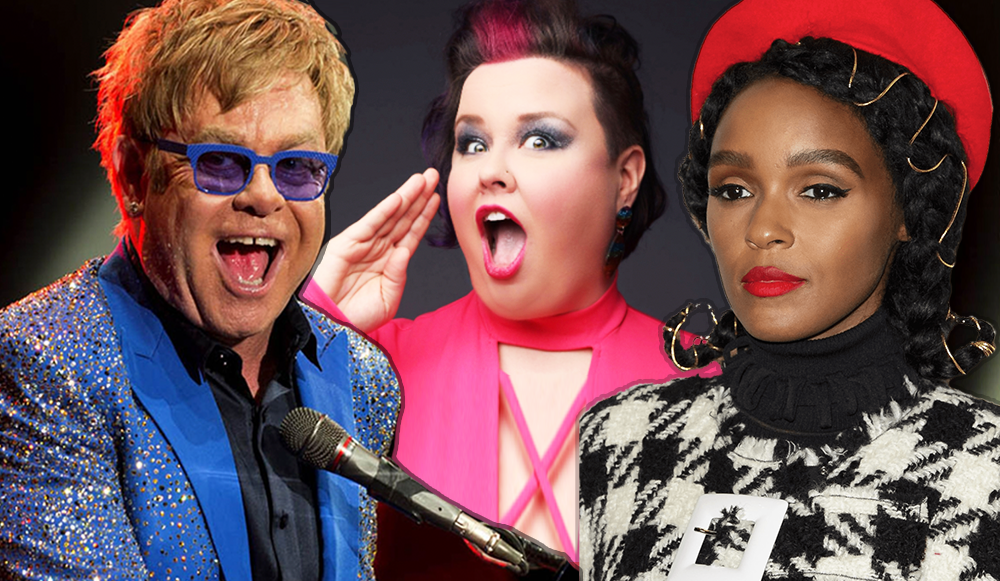Take action and make a difference today.
At Orchestras for All (OFA), we fully support the LGBTQIA+ community and know that by doing so, it contributes towards creating a world that is more just, equitable and inclusive for all – regardless of people’s sexual orientation or gender identity.
We believe that everyone deserves to be treated with the same level of respect and dignity, free of discrimination and prejudice – and with many members of the LGBTQIA+ community often facing higher rates of anxiety, depression and other mental health conditions, supporting them also means advocating for their health and wellbeing, boosting their confidence and promoting a sense of belonging.
Celebrating diversity enriches our society, bringing us together in new and meaningful ways. This has never been more apparent than it is in the music sector today, so here are seven ways you can support musicians in the LGBTQIA+ community.
1. Listen to LGBTQIA+ music
One of the easiest ways you can support LGBTQIA+ musicians is to discover and listen to their work. Popular music streaming platforms like Spotify, Apple Music and Tidal have curated playlists featuring LGBTQIA+ artists, or you can stay up to date about new releases by following them on social media.
You could also attend LGBTQIA+ music festivals, listen to radio stations that play music exclusively from the LGBTQIA+ community – such as Pride Radio and Hits Radio Pride – or ask for personal recommendations from friends and community members.
2. Donate to LGBTQIA+-friendly organisations
National Orchestra for All Ambassador, Mars, supports the ensemble at their Nottingham rehearsals
In the UK, there are so many inspiring organisations that support the LGBTQIA+ community, including Stonewall, Galop, Mermaids, MindOut and the Human Rights Campaign.
We’re also proud to be LGBTQIA+-friendly here at Orchestras for All, welcoming all young musicians and staff to our diverse, inclusive and often life-changing musical programmes regardless of where they come from or how they choose to identify. Please support our work and donate what you can today:
3. Create safe spaces for LGBTQIA+ musicians
A selection of fidget toys and crafts in the wellbeing room at a National Orchestra for All course
National Orchestra for All Wellbeing Tutor, Xia-Leon, said: “A great place to start is by asking everyone to include their pronouns when introducing themselves in group environments, and respect these and the language aligned with them at all times. Combined with non-gendered dress codes, this will help trans and gender non-conforming members of your organisations and communities to feel welcome and safe to present as their authentic selves.”
During NOFA courses, members and staff also have access to a “wellbeing room” where they can go to relax, recharge and take care of their physical and mental health in a calming space. Comfy seating, sensory toys, meditative tools, reading material and friendly faces from the wellbeing team are all effective ways of ensuring our young musicians – including those from the LGBTQIA+ community – always feel safe and supported when they need time out from rehearsals or performing.
4. Buy LGBTQIA+ music and attend shows
In today’s digital world, it can be all too easy for us to rely solely on streaming as a means of consuming music – and especially when so much of it is freely available. Purchasing music written by your favourite LGBTQIA+ artists or showing your support by attending their live events goes a long way in keeping up the momentum within the community.
As well as selling music via their websites, popular platform Bandcamp is often used by independent musicians to sell their work directly to fans, or you can team up with a friend on the weekend and seek out hidden gems in your local record store.
5. Share LGBTQIA+ music on social media
From TikTok and Twitter to Instagram and Snapchat, social media platforms are growing faster than ever – and let’s face it, they won’t be slowing down anytime soon. To increase the visibility of your favourite LGBTQIA+ musicians, help them reach a wider audience and connect with others who might enjoy their work, one of the quickest ways you can act is by sharing links to their work with your followers – and as regularly as you can!
If you’re a bit of a wordsmith, you might even want to consider writing reviews and tagging artists in your post using relevant hashtags, such as #LGBTQIA+Music or #QueerArtists.
6. Include LGBTQIA+ music in your choice of repertoire
If you’re a member of a youth orchestra or choir, why not make a suggestion to perform some of the music you’ve discovered live in concert? As part of OFA’s repertoire last season, National Orchestra for All performed ‘Young Person’s Guide to the Orchestra’ by composer Benjamin Britten, who was an openly gay man.
Orchestral covers of songs famously associated with the LGBTQIA+ community – including Queen’s 1984 rock hit, ‘I Want to Break Free’, Lady Gaga’s chart-topping tune, ‘Born This Way’, and Gloria Gaynor’s disco anthem, ‘I Will Survive’ – can also be a powerful way to celebrate and amplify people’s voices and experiences.
7. Advocate for LGBTQIA+ rights
National Orchestra for All members rehearse on stage at the Royal Birmingham Conservatoire
Finally, take the time to educate yourself on LGBTQIA+ history and the rights movement. Use your voice to speak up whenever you hear homophobic or transphobic remarks and raise awareness about some of the key issues people face today.
Support politicians and policies that promote equality, engage with charities that are committed to implementing positive change and become an ally for your LGBTQIA+ friends, family and colleagues. By taking these steps, you can help to create a more inclusive and accepting society for LGBTQIA+ musicians.








